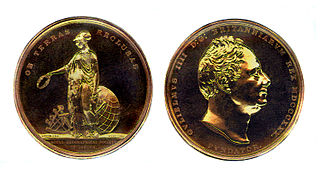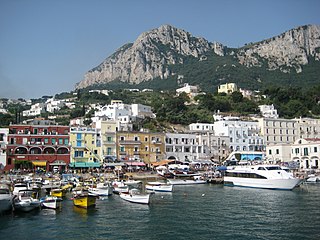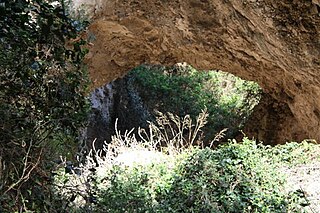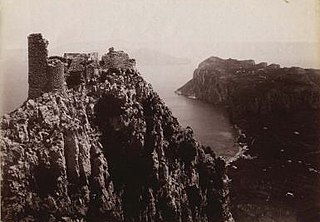
The Royal Geographical Society is the UK's learned society and professional body for geography, founded in 1830 for the advancement of geographical sciences. Today, it is the leading centre for geographers and geographical learning. The Society has over 16,500 members and its work reaches millions of people each year through publications, research groups and lectures.

The Ford Capri is a fastback coupé built by Ford Motor Company between 1968 and 1986, designed by American Philip T. Clark, who was also involved in the design of the Ford Mustang. It used the mechanical components from the Mk2 Ford Cortina and was intended as the European equivalent of the Ford Mustang. The Capri went on to be a highly successful car for Ford, selling nearly 1.9 million units in its lifetime. A wide variety of engines was used in the Capri throughout its production lifespan, which included the Essex and Cologne V6 at the top of the range, whilst the Kent straight-four and Taunus V4 engines were used in lower specification models. Although the Capri was not officially replaced, the second-generation Probe was effectively its replacement after the later car's introduction to the European market in 1992.
Capri Sun is a brand of juice concentrate drink owned by Capri Sun Group Holding in Switzerland, which is a privately held company of Hans-Peter Wild. It was introduced in 1969 and named after the Italian island of Capri. Capri Sun has been distributed in the United States since 1981. Kraft Foods is a licensed production partner for North America. In the Netherlands, France, the UK, Belgium and Ireland, it is distributed by Coca-Cola Partners. As of 2015, 5 flavors are certified kosher by OK Kosher Certification.

Capri pants are pants that are longer than shorts but are not as long as trousers. They typically come down to between knee and calf or ankle length. Capris are popular with people in many countries; especially in the United States, Europe, Latin America, and Asia.

The Royal Geographical Society's Gold Medal consists of two separate awards: the Founder's Medal 1830 and the Patron's Medal 1838. Together they form the most prestigious of the society's awards. They are given for "the encouragement and promotion of geographical science and discovery." Royal approval is required before an award can be made.

Capri is a municipality, in the Metropolitan City of Naples, situated on the island of Capri in Italy. It comprises the centre and East of the island, while the West belongs to Anacapri.
Fellowship of the Royal Geographical Society (FRGS) is a prestigious Fellowship granted by the Royal Geographical Society (RGS) that is open to those over the age of 21 who can demonstrate:

Monte Solaro is a mountain on the island of Capri in Campania, Italy. With an elevation of 589 m, its peak is the highest point of Capri.

Marina Piccola is located on the southern side of the island of Capri. It is near the Faraglioni sea stacks to the southeast. The Via Krupp is a historic switchback paved footpath which connect the Charterhouse of San Giacomo and the Gardens of Augustus area with Marina Piccola. The Marina Piccola, used by Augustus and Tiberius, preceded the Marina Grande.
Palazzo a Mare is a well-preserved ancient Roman archaeological site on the north side of the island of Capri, consisting of an imperial palace built by Augustus and modified by Tiberius. It was one of the supposed 12 villas of Tiberius on the island as described by Tacitus along with the Villa Jovis, Villa di Gradola and Villa Damecuta. It covers a very large area on several terraces overlooking the sea.

The Grotta di Matromania is a large, natural cave on the east coast of the island of Capri, Italy. It is located near the Arco Naturale. The cave is approximately 27 m long, 18 m wide, and 18 m high. It is connected with Mithras.
The Grotta dell' Arco is a large, shallow cave on the island of Capri, Italy. It faces east, and is situated about 240 m above sea level, under the cliffs which are south-east of the Castello Barbarossa. The cave is about 85 feet (26 m) in height and may have resulted from the great landslide which occurred at the east of Monte Solaro.

Castello Barbarossa is an archaeological ruin and ornithological station in Anacapri, on the island of Capri, Italy. It derives its name from the pirate and Ottoman admiral, Hayreddin, nicknamed Barbarossa ("Redbeard"), who stormed it in 1535 and destroyed it in 1544. The construction date is uncertain but it perhaps dates back to the late ninth century. From 1898, the structure, now in ruins, was owned by the Swedish psychiatrist Axel Munthe who donated it to his foundation. The surroundings, interesting for their botanical features, are home to the island's ornithological station.
The Grotta dell'Arsenale is a cave on the island of Capri, southern Italy.
The Grotta Bianca is a sea cave located on the island of Capri, Italy. It derives its name from white incrustations of calcareous matter upon its sides, and from clusters of white stalactites which hang from the roof and fringe the entrance. The cave faces east and is situated near the Punta della Chiavioa. The entry, about 70–80 feet (21–24 m) high, leads into upper and lower caves, of which the former is not easily accessible. The lower cave can be entered by boat for a short distance. Unlike most other caves at the water-level, it is much broader at approximately 6 feet (1.8 m) above the water than actually at the surface. The total height is no more than 24 feet (7.3 m). The upper erosion line is clearly marked near the cave and within it. The upper cave seems to belong to an earlier period.
The Grotta Verde is a sea cave located on the island of Capri, southern Italy.
The Cloaca is an archaeological site on the island of Capri, Italy. It was part of a sewage system built in Roman times. The end of the sewer is visible west of the Marina Grande. It seems to have drained a considerable part of the northern side of the island, as evidenced by many smaller drains which are believed to have led into it. The fall of the sewer has been greatly changed. Instead of having a gentle gradient from south to north, it dips steeply in the reverse direction, north to south, at an angle of 25°. This reversal of incline has occasionally been cited as evidence for the alteration of the land-level of Capri since the Roman period.
Chiesa di Santa Maria a Cetrella is a Franciscan chapel and hermitage in Anacapri, Capri, Italy. Referred to as "Capri's most otherworldly church", it contains a Madonna statue which is venerated by pilgrims, including Rainer Maria Rilke. Built in the Middle Ages, its features include stucco siding, with a low-vaulted ceiling.









